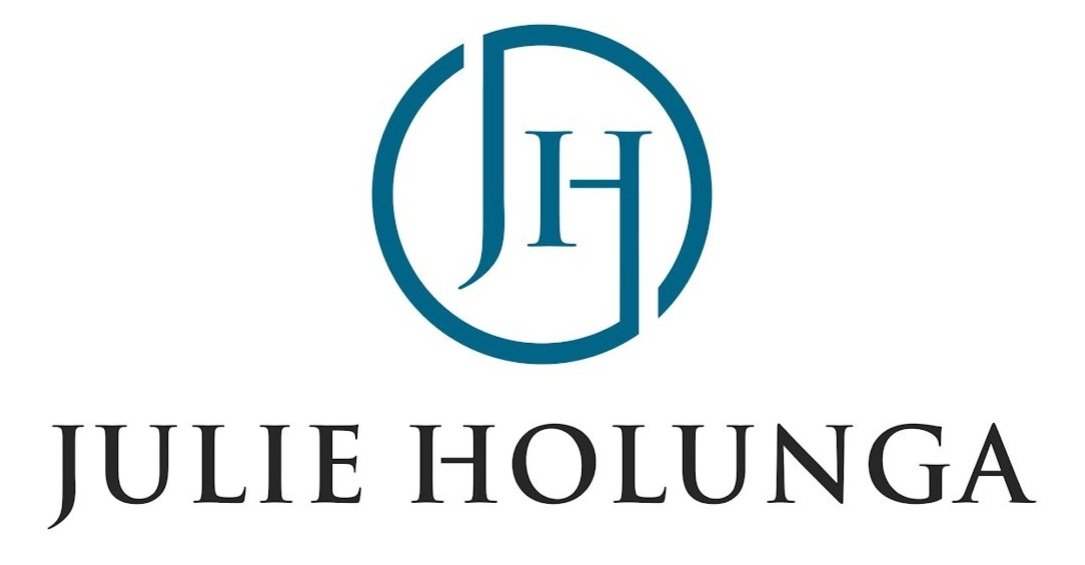How to Build a Strong, Higher-Performing, and More Profitable Hybrid Workforce
 Work-from-home team members are becoming more and more popular in professional service firms, especially in a post-pandemic marketplace. A hybrid workforce is essential to staying competitive, but it's likely your current team setup wasn't built to be a hybrid team. That all changed when lockdowns forced firms and employees to work from home.Now that the world seems to be opening back up more, firms need to recognize their new reality: work-from-home is an expectation that's here to stay. Over 10,000 Google employees recently applied to work from home exclusively and approximately 85 percent of those requests were approved. Of the remaining 15 percent of requests that weren't approved, the reasoning was that their jobs required specialized equipment or face time with customers, according to Google’s head of human resources Fiona Cicconi. This approach flies in the face of traditional law firm expectations for young associates: 100-hour workweeks, all-nighters at the office, no free time in the evenings or weekends because “its the nature of the beast!”Rather than push against this new norm, this is your chance to invest in building the strongest, highest-performing, and most profitable hybrid workforce possible. What are the factors you need to consider when building a hybrid workforce? What are some of the top mistakes or pitfalls that firms are falling into with this switch? Most importantly, what are the key markers that will let you know your approach is working?
Work-from-home team members are becoming more and more popular in professional service firms, especially in a post-pandemic marketplace. A hybrid workforce is essential to staying competitive, but it's likely your current team setup wasn't built to be a hybrid team. That all changed when lockdowns forced firms and employees to work from home.Now that the world seems to be opening back up more, firms need to recognize their new reality: work-from-home is an expectation that's here to stay. Over 10,000 Google employees recently applied to work from home exclusively and approximately 85 percent of those requests were approved. Of the remaining 15 percent of requests that weren't approved, the reasoning was that their jobs required specialized equipment or face time with customers, according to Google’s head of human resources Fiona Cicconi. This approach flies in the face of traditional law firm expectations for young associates: 100-hour workweeks, all-nighters at the office, no free time in the evenings or weekends because “its the nature of the beast!”Rather than push against this new norm, this is your chance to invest in building the strongest, highest-performing, and most profitable hybrid workforce possible. What are the factors you need to consider when building a hybrid workforce? What are some of the top mistakes or pitfalls that firms are falling into with this switch? Most importantly, what are the key markers that will let you know your approach is working?
Step 1: Evaluate Your Workforce Balance Between Work-from-Home/Remote and In-Person Employees.
It’s best to establish a hybrid work model before you ask your staff to return to the office space. Many firms maintain a hybrid workforce that's evenly split between onsite and offsite employees. The balanced approach builds in one strategic advantage: it keeps one group of employees from feeling like they're outnumbered right off the bat. If you have 30% of your workforce working remotely while the remaining 70% are in the office, how much influence can your remote workforce reasonably expect to have inside your firm?If you want to evaluate your workforce balance, identify how many employees are currently working remotely, and what percentage of the workforce they represent. Of those remote employees, how many of them represent senior levels of influence or leadership in your firm? If you have an inordinate amount of younger team members that are fully remote while requiring more senior-level team members to be on-site, you will likely experience significant pushback in the coming months. Younger team members will also lose out on skill development, opportunities, and visibility. When building a hybrid workforce, what percentage of your team should be remote versus in-person? Experts recommend that a maximum of two-thirds of your team members can be remote workers, but after working with firms across North America, I recommend limiting that number to no more than 50 percent. Of your senior leadership team, I recommend giving them the freedom to model what they expect their direct teams to follow when it comes to location and team balance. What may be great for one team or task force may not be realistic for another team. Careful evaluation and honest discussion about what your firm needs the most will guide your decisions moving forward. Consider how teams interact as well so as not to create or enhance silos.
Step 2: Revisit Your Firm's Current Workplace Culture Compared to Your Desired Workplace Culture.
What is the overall 'vibe' your firm is championing for your entire staff? What is your firm’s identity? This can't just be a "We have drink carts, an on-site massage specialist, and a golf charity outing every year." It must be ingrained in the very DNA of your team members' work. How your team members treat any other team member is an exact reflection of what they believe to be the culture set for your firm.When was the last time you asked tough questions about your firm's workplace environment? Is it a place where everyone feels valued and respected? Is there a specific group of people who seem to matter more to your firm's leadership than other groups? If there's any hint of a 'have' versus 'have not' in your firm, that is a sign that your workplace culture needs improvement.A workplace culture that values and respects all team members is one of the key pillars to building a strong, higher-performing, more profitable hybrid workforce. It's not easy but it can be done with intentional effort on your part. I would go so far as to say that without a healthy workplace culture, no hybrid workforce can expect to survive, let alone thrive.
Step 3: Articulate Your Firm's Communication, Collaboration, and Conflict Resolution Expectations for All Team Members, No Matter Their Location.
How do you expect your team members to engage and work with each other? As elementary as this may sound, there's a reason why professional athletes have spring training or training camp: even the best of the best sometimes need reminders and accountability. Any of us can get too comfortable, too familiar with settings and situations, which can lead to us not giving our best. We need reminders. We need accountability.If you want to build the best hybrid workforce, ensure there is an open dialogue between in-person and remote team members about how to collaborate more closely with each other. Assign leadership opportunities to both in-person and remote team members - and don't automatically assume that the best leadership can only happen from someone who has a 'boots on the ground' perspective.Also, you want to include remote and in-person team members on the same projects or tasks. It's a great idea to have both remote and in-person team members meet regularly for an hour or two on a consistent basis (I recommend weekly or bi-weekly), so they can discuss the progress of their respective projects.Part of building a great hybrid workforce means you have the same language of communication across your organization. How do you handle conflict as an organization, not just as individuals? How do you set timelines, track budgets, lead projects, onboard clients, close out cases, and handle other key responsibilities as a firm? You need to facilitate open, honest dialogue between your employees about how to communicate better with each other - and make adjustments as needed. Don’t avoid the hard and difficult conversations.
Step 4: Shore Up Your Technical Support and Logistical Infrastructure for Optimal Productivity.
When lockdowns shifted office work to work-from-home setups, everything from billing, dealmaking, staffing, group meetings, brainstorming sessions - everything demanded a new technical infrastructure to succeed. Firms were overnighting servers, printers, computers, and every other type of office equipment to their staff's homes. Every aspect of how we do our work changed in a matter of days, if not hours.As more firms are considering a true hybrid workplace for the future, it's time to shore up the technical support and logistical infrastructure that was patchworked in place over the past year. More secure servers (home VPNs?), streamlined collaboration processes, and a smarter data-driven dispersion across your entire firm will help your team feel connected from anywhere with complete confidence.You can also upgrade your technology to an always-on, on-demand IT infrastructure that's responsive and cost-effective. It will mean fewer interruptions for everyone involved as you transition from the traditional office environment to a new hybrid future.
meetings, brainstorming sessions - everything demanded a new technical infrastructure to succeed. Firms were overnighting servers, printers, computers, and every other type of office equipment to their staff's homes. Every aspect of how we do our work changed in a matter of days, if not hours.As more firms are considering a true hybrid workplace for the future, it's time to shore up the technical support and logistical infrastructure that was patchworked in place over the past year. More secure servers (home VPNs?), streamlined collaboration processes, and a smarter data-driven dispersion across your entire firm will help your team feel connected from anywhere with complete confidence.You can also upgrade your technology to an always-on, on-demand IT infrastructure that's responsive and cost-effective. It will mean fewer interruptions for everyone involved as you transition from the traditional office environment to a new hybrid future.
Step 5: Prepare Now for Inevitable Change in the Future.
Will we go back into lockdown in the coming months? No one truly knows. Will more variants of the Covid-19 virus continue popping up around the world? Only time will tell. What we do know is that change is one of the greatest certainties of life.The key for professional service firms is to be proactive in understanding the changes on the horizon, and how they will affect your organization. What are you doing now that needs to change? How can you prepare for what might lie ahead? Leading through difficult times and learning how to manage change better are essential pillars for any hybrid workforce.With more and more firms going back to the office, you need a solid back-to-the-office plan. With the right approach and careful planning, this could become your greatest competitive advantage right now. That's why I launched ReIgnite - your six-session professional development and coaching program designed to help you build a stronger, more profitable, and higher-performing hybrid workforce in the next 90 days or less.We cover six key topics:
- Team Dynamics
- Managing Change
- Becoming Conflict Competent
- Giving and Receiving Effective Feedback
- Navigating Difficult Conversations
- Leading through Challenging Times
All sessions can be done in-person or remotely, whichever works best for your team. I'm your key presenter drawing from my experience working with Harvard Business School, some of the top Wall Street firms, and the who's who of tech leaders. If you're serious about building a thriving, bottom-line-boosting hybrid workforce for the future, ReIgnite was made for you.See what's possible with Reignite.
